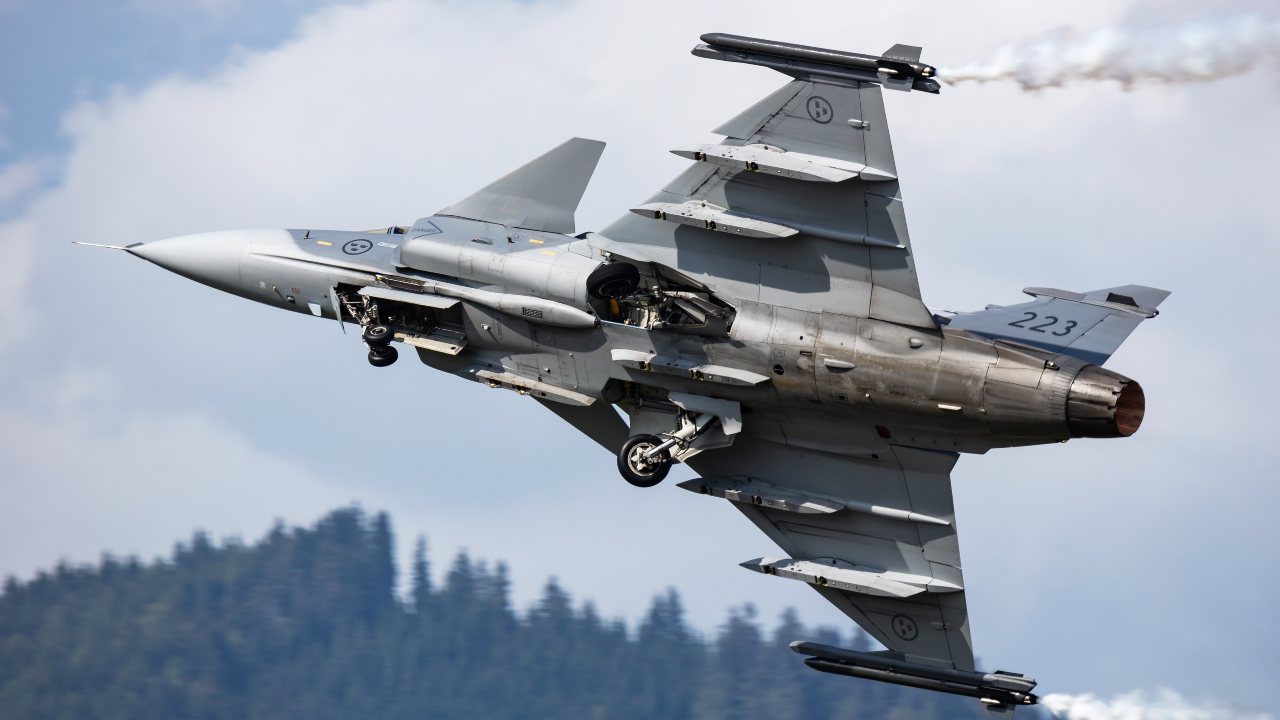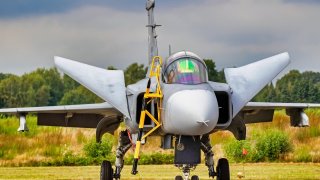JAS 39 Gripen E: Sweden's Multirole Fighter Is a Powerhouse in the Sky
The JAS 39 Gripen E, the latest iteration of the Swedish multirole fighter jet designed by SAAB, represents a significant advancement in fourth-generation aircraft technology. Built for air superiority and ground attacks, the JAS 39E is noted for its operational flexibility, able to launch from nearly any terrain and requiring minimal support.
Summary: The JAS 39 Gripen E, the latest iteration of the Swedish multirole fighter jet designed by SAAB, represents a significant advancement in fourth-generation aircraft technology. Built for air superiority and ground attacks, the JAS 39E is noted for its operational flexibility, able to launch from nearly any terrain and requiring minimal support.
The JAS 39 Gripen is a fourth-generation multirole fighter jet. The aircraft specializes in air superiority and ground attack operations.
A new version of the aircraft is in the works, and it would improve NATO capabilities and deterrence against Russia.
The JAS 39 Grippen E
The newest version of the JAS 39 Gripen is the “E.”
A single-seat aircraft, the JAS 39E Gripen is built by the Swedish SAAB. According to SAAB, the JAS 39E is designed for air forces that are faced with “more pronounced threats of wider territories to secure.”
SAAB prides itself on the fact that the JAS 39 Gripen can operate from almost anywhere, including remote highways, and that it requires little support to function. Although the aircraft has a great operational range (2,000 miles), its combat radius—the range in which it could operate under combat conditions—is more limited at 500 miles. However, the fighter jet has the ability to refuel and rearm very quickly and under adverse conditions. Specifically, SAAB claims a combat turnaround of between ten and twenty minutes. As such, fewer JAS 39E Gripens can project the same or even more combat power compared to adversary aircraft that can only operate for a limited amount of time over the battlefield.
When it comes to weapon systems, the JAS 39E Gripen packs quite a punch. In ten external hardpoints, the JAS 39E Gripen can carry over 12,000 lbs of munitions, including weapon systems like the IRIS T and AIM-9 Sidewinder heat-seeking air-to-air missiles; MBDA Meteor and AIM 120 AMRAAM radar-guided, beyond-visual range missiles; AGM-65 Maverick air-to-ground missiles, as well as long-range cruise missiles, smart air-to-ground munitions, and conventional bombs. For close-quarters combat, the JAS 39E Gripen packs a Mauser BK 27mm cannon.
In terms of speed, the aircraft uses a single General Electric F414 turbofan engine and can reach maximum speeds of Mach 2 (approximately 1,500 miles per hour).
As far as sensors, the Swedish-made fighter jet has an Active Electronically Scanned Array (AESA) radar and an InfraRed Search and Track System (IRST), which can find and track targets without emitting radiation, thus making the aircraft harder to find. The JAS 39 Gripen also packs new electronic warfare and communication capabilities. Moreover, the “E” version employs artificial intelligence to facilitate the pilot’s decision-making process through the Wide Area Display cockpit that presents information to the pilot in an efficient way.

“Information is quickly analyzed and shared in real-time, enabling critical decisions to be rapidly implemented, ensuring tactical superiority,” SAAB states on its website.
“All information collected by the tactical unit and other available battlefield sensors is also vital, and it needs to be linked, processed and presented in an accurate way. This superior situational awareness provides the tactical edge that Gripen E needs to secure mission success and platform survivability,” the Swedish company adds.
Different iterations of the aircraft are in service with six air forces: the Swedish, Brazilian, Hungarian, Czech, Thai, and South African. Of these, Sweden and Brazil have ordered the new version.
About the Author
Stavros Atlamazoglou is a seasoned defense and national security journalist specializing in special operations. A Hellenic Army veteran (national service with the 575th Marine Battalion and Army HQ), he holds a BA from the Johns Hopkins University, an MA from the Johns Hopkins’ School of Advanced International Studies (SAIS). He is pursuing a J.D. at Boston College Law School. His work has been featured in Business Insider, Sandboxx, and SOFREP.


